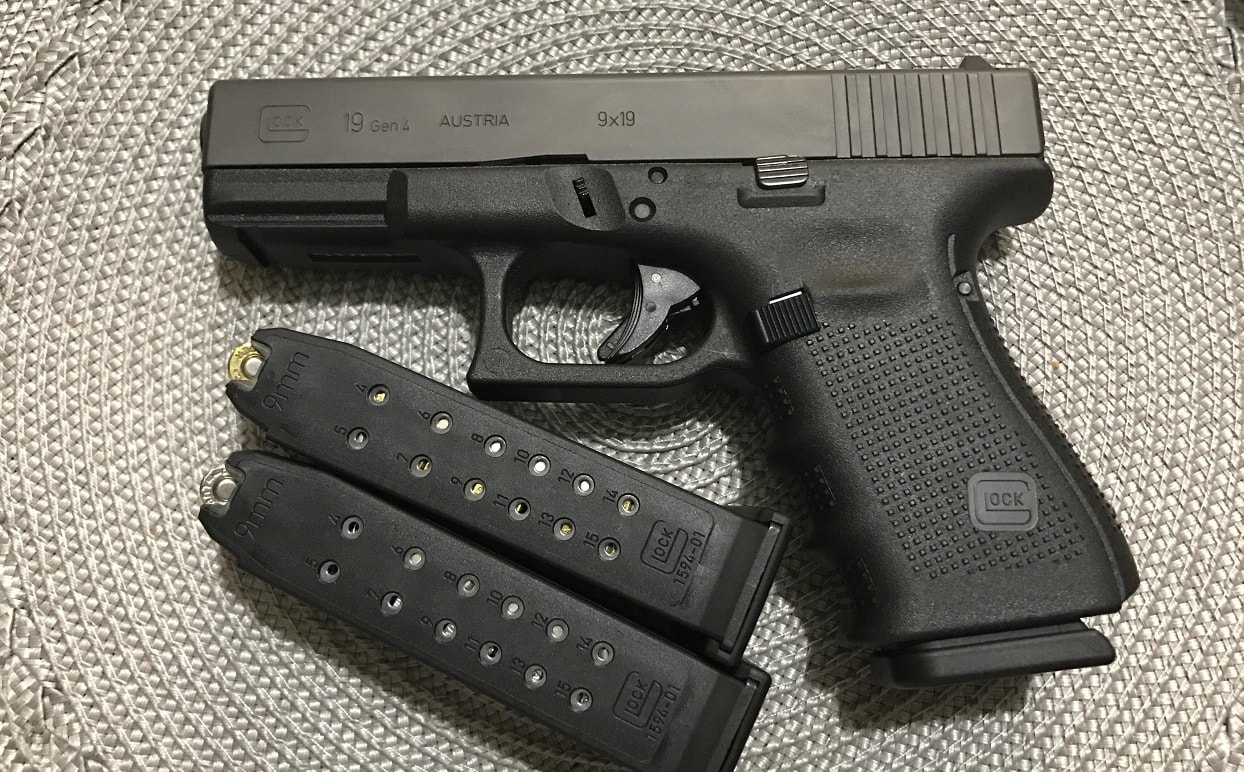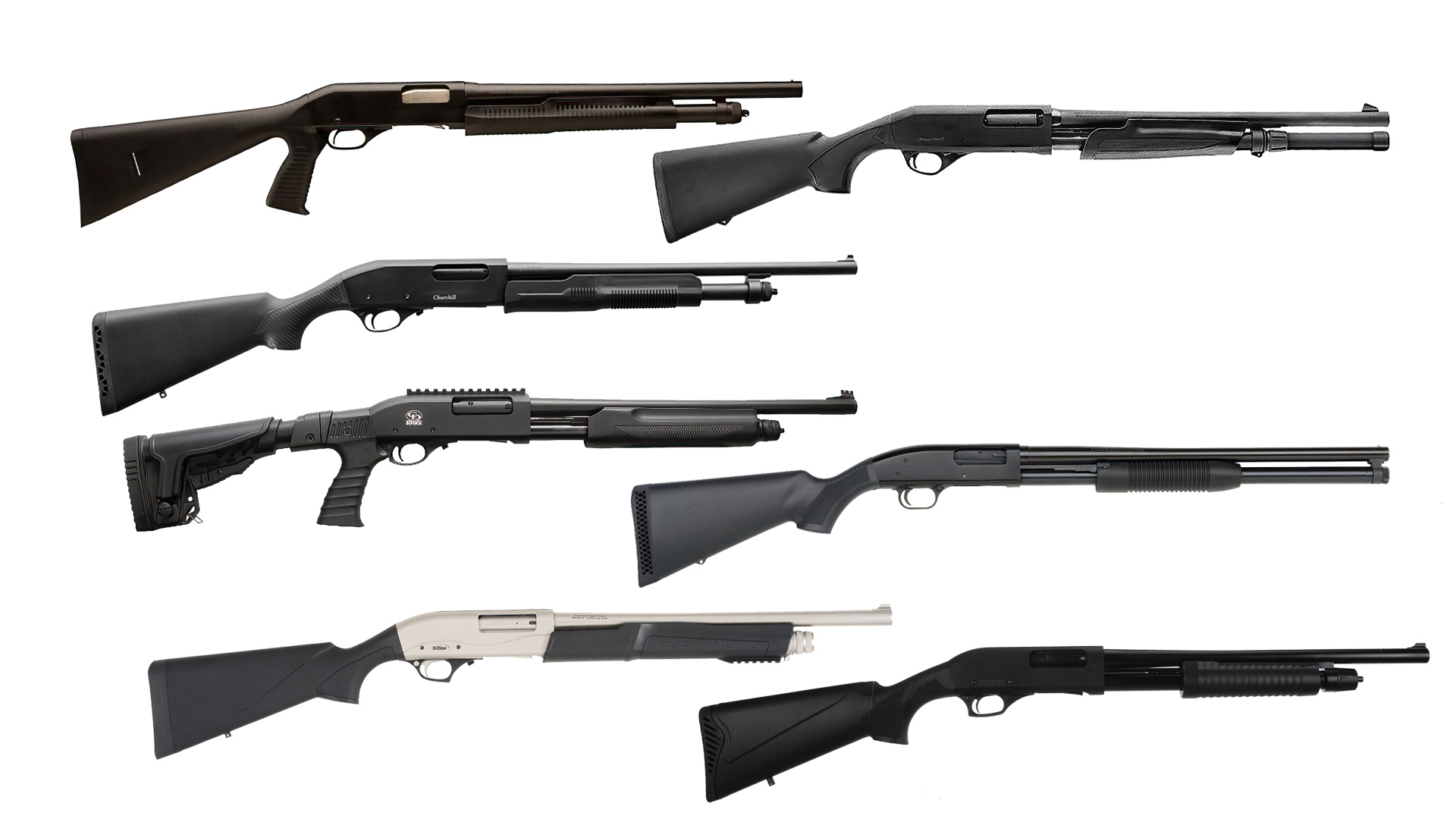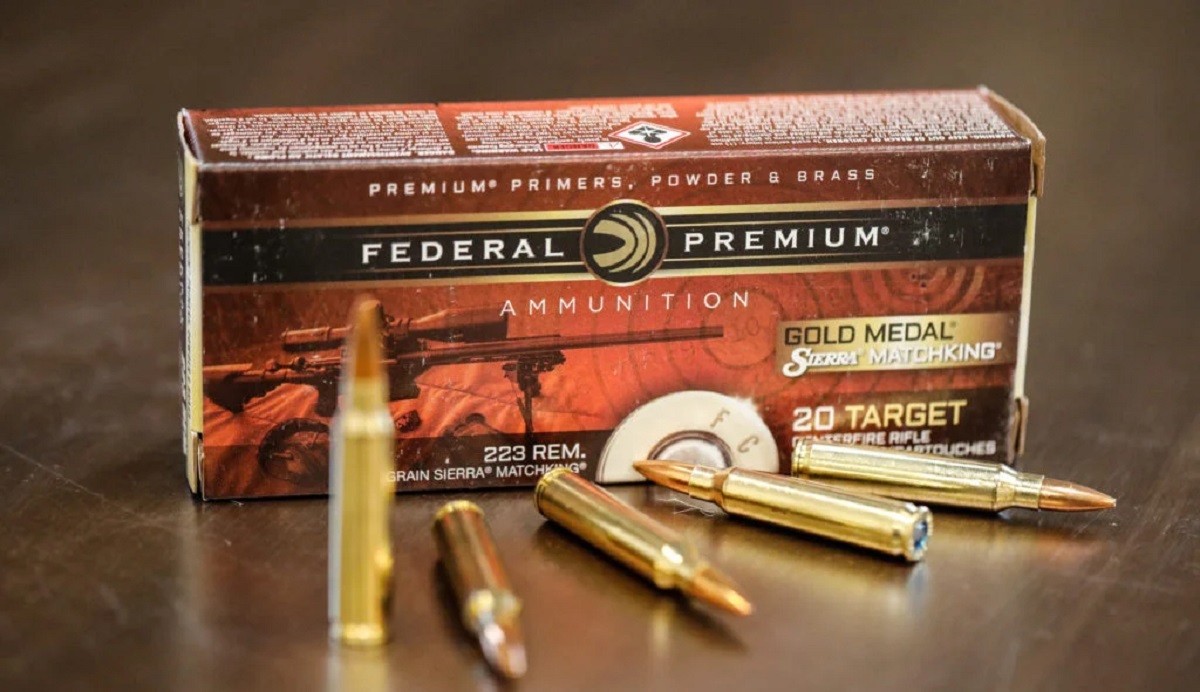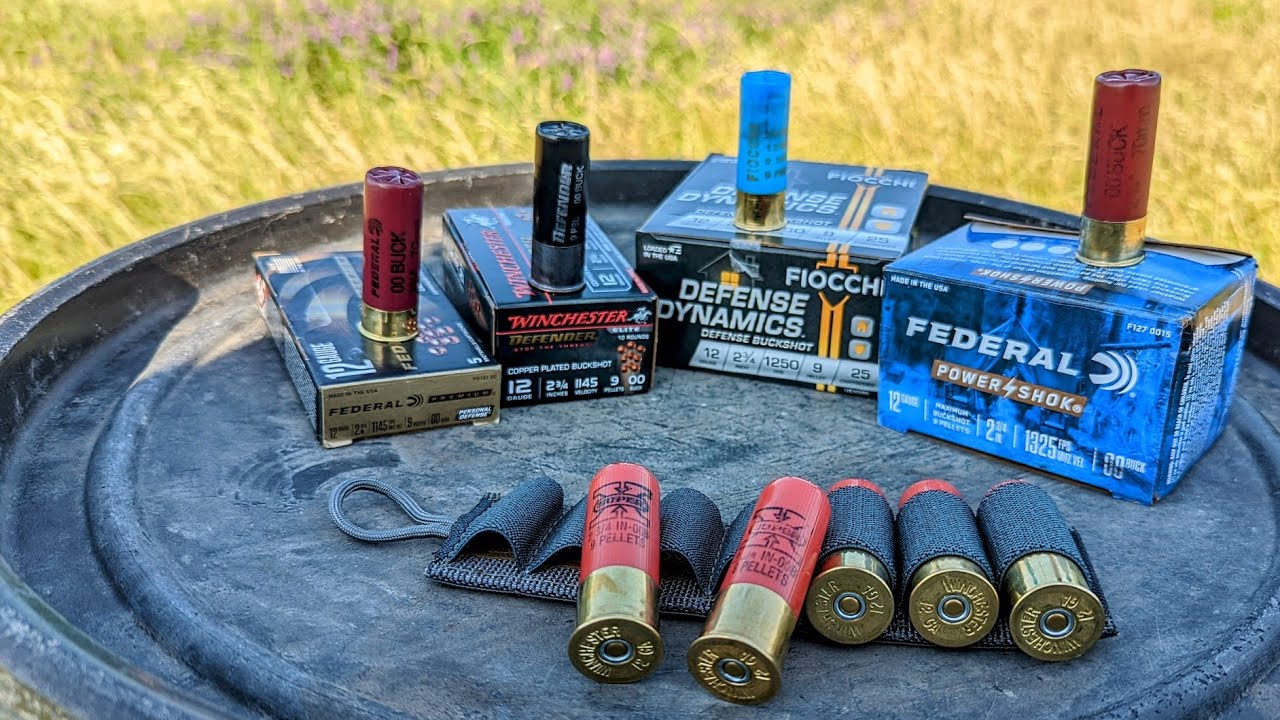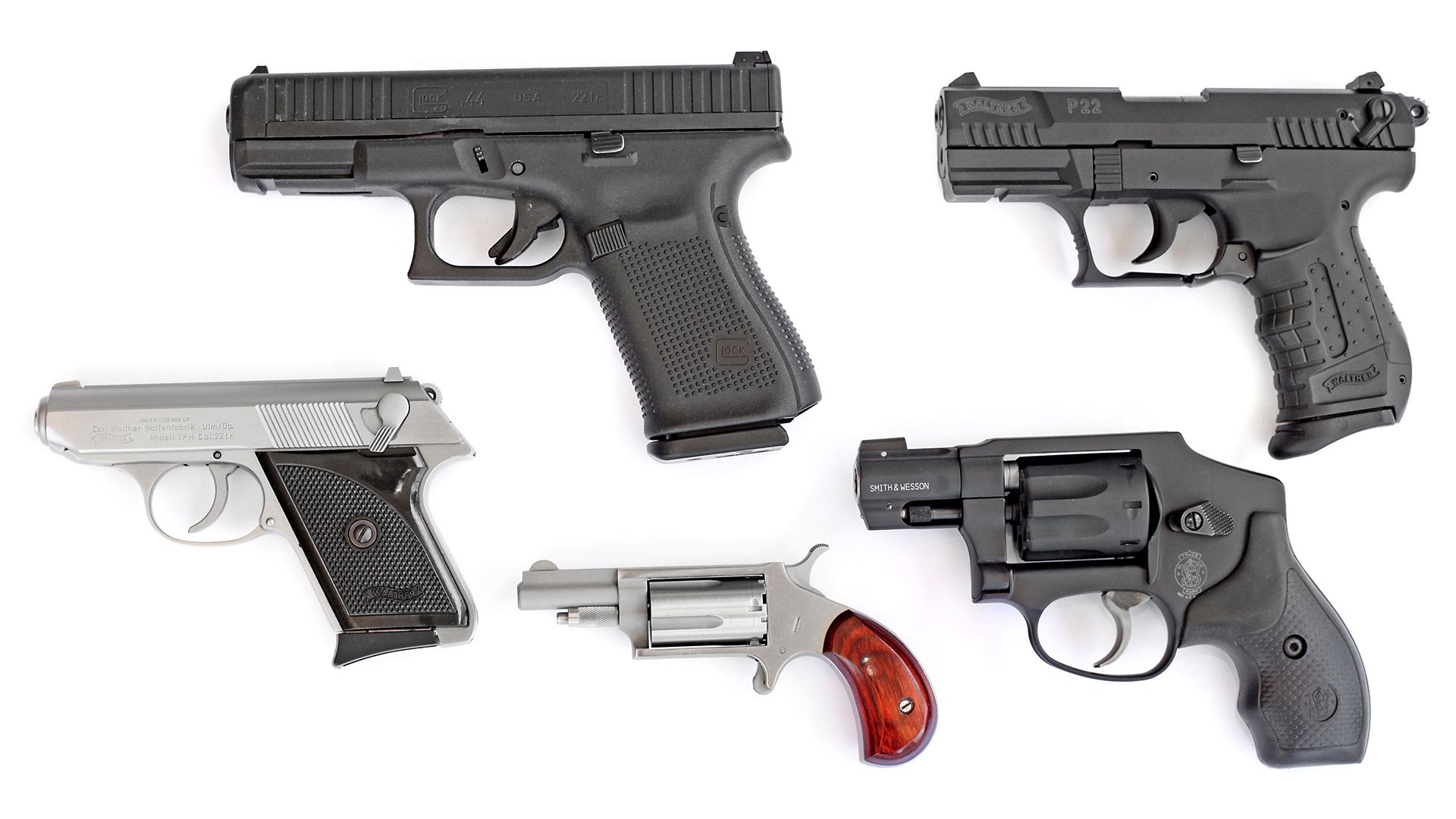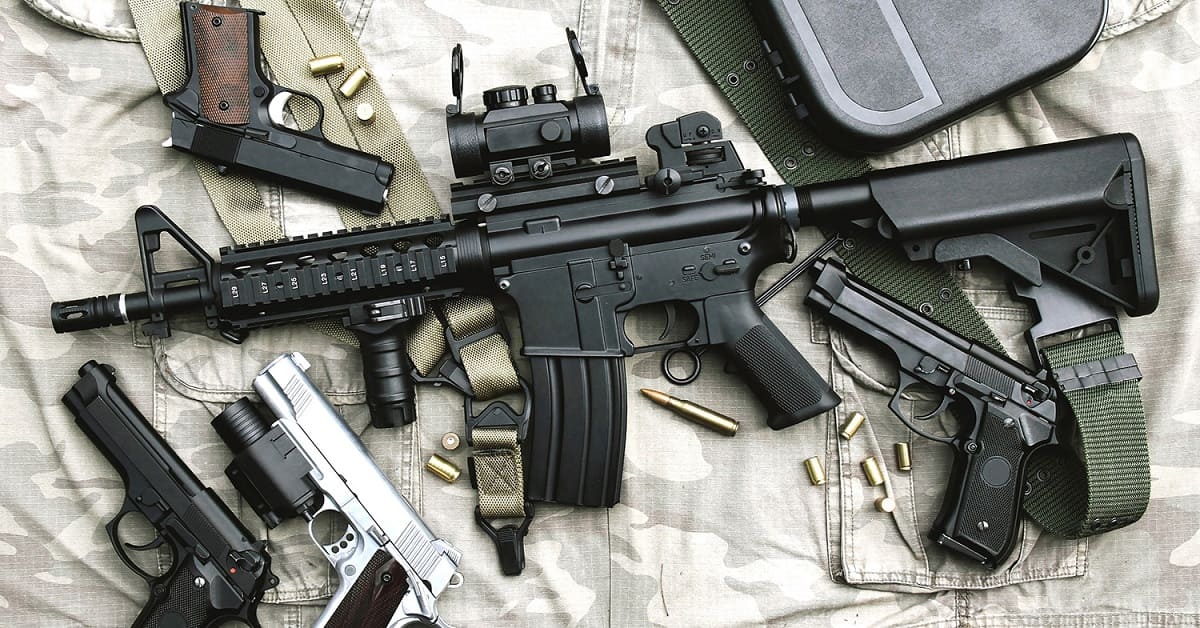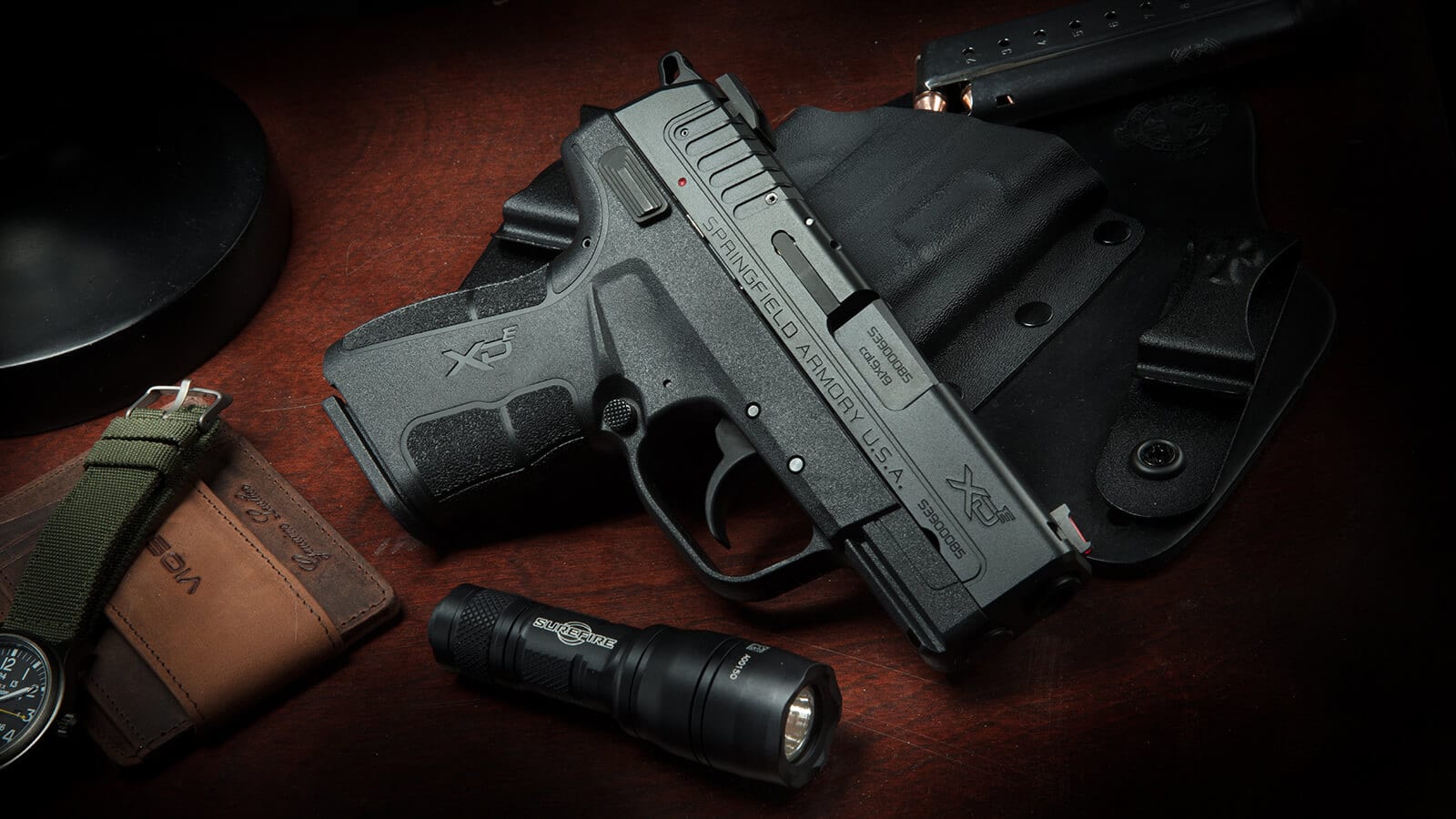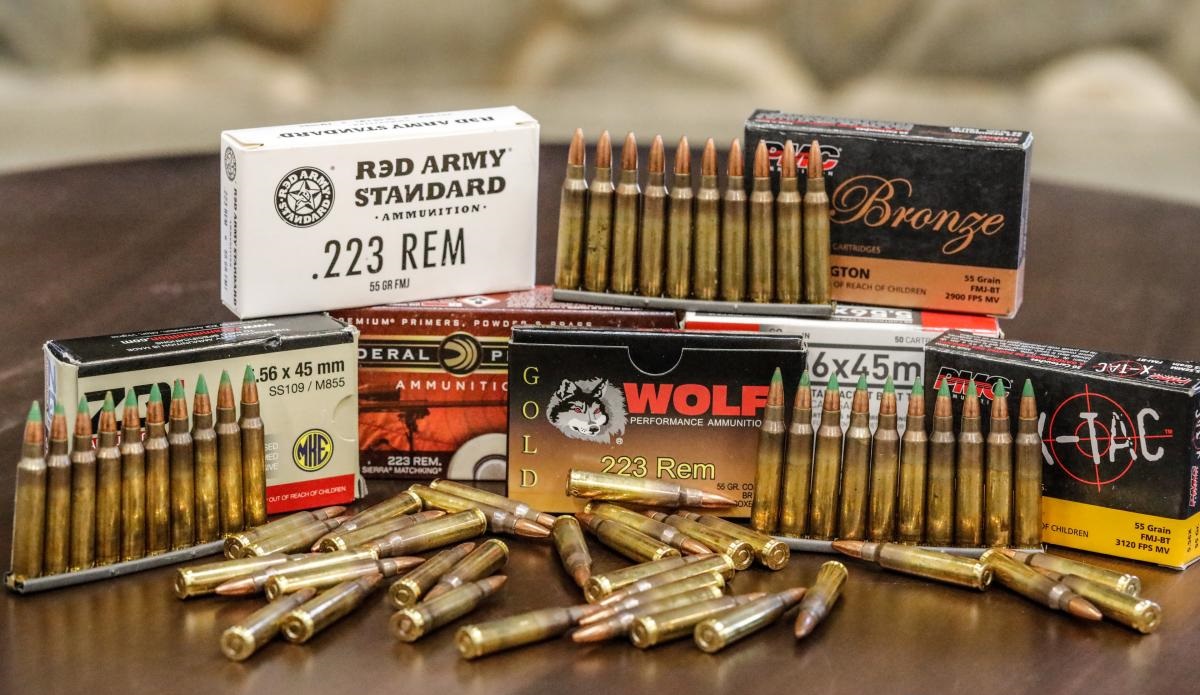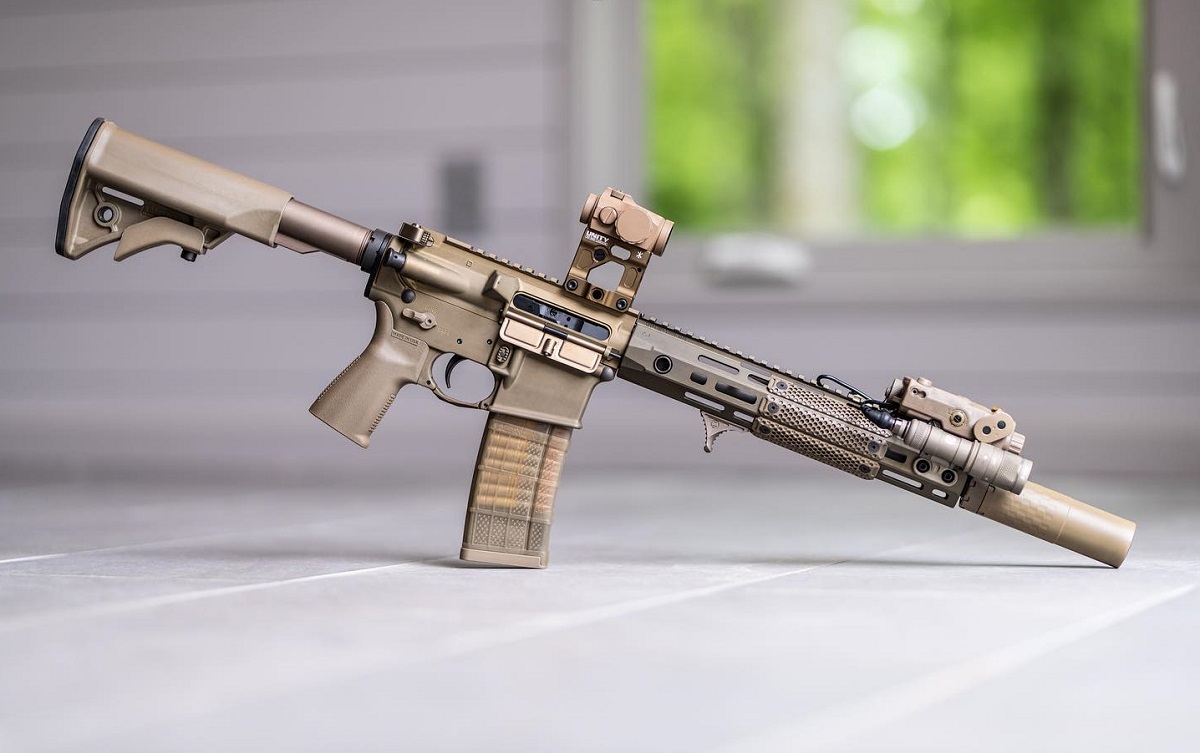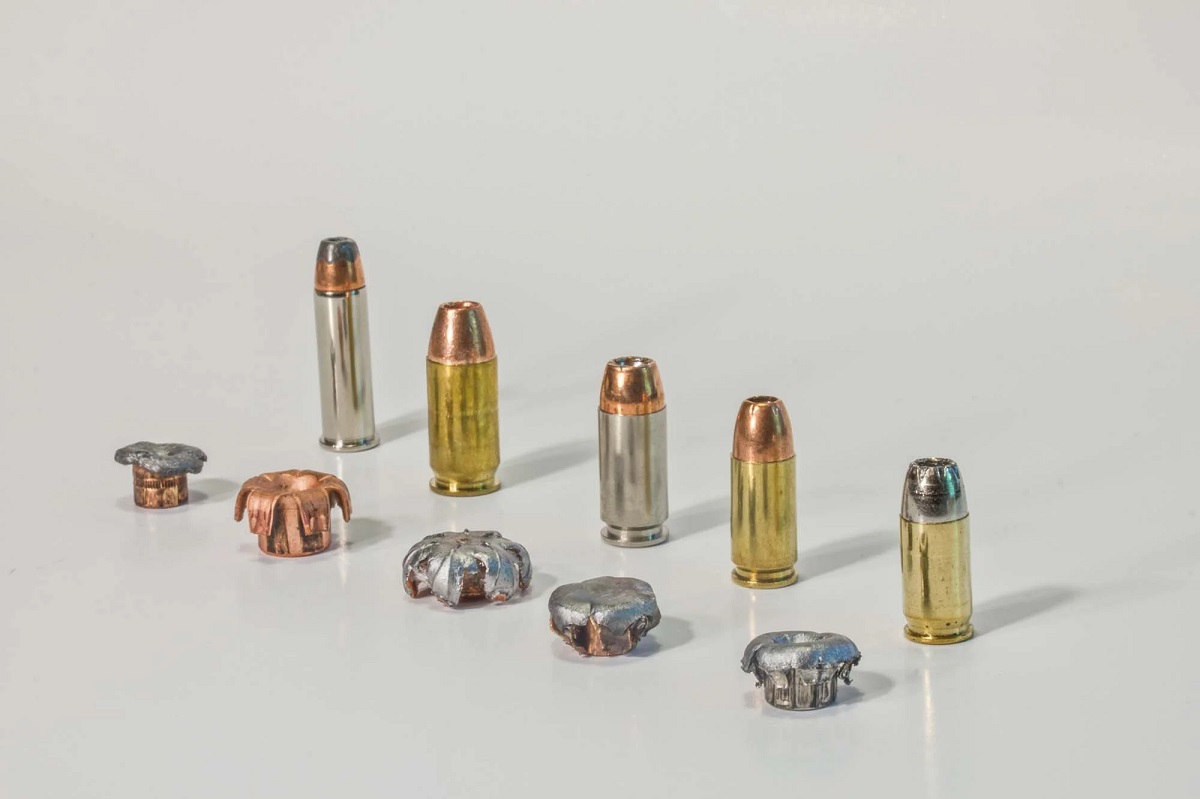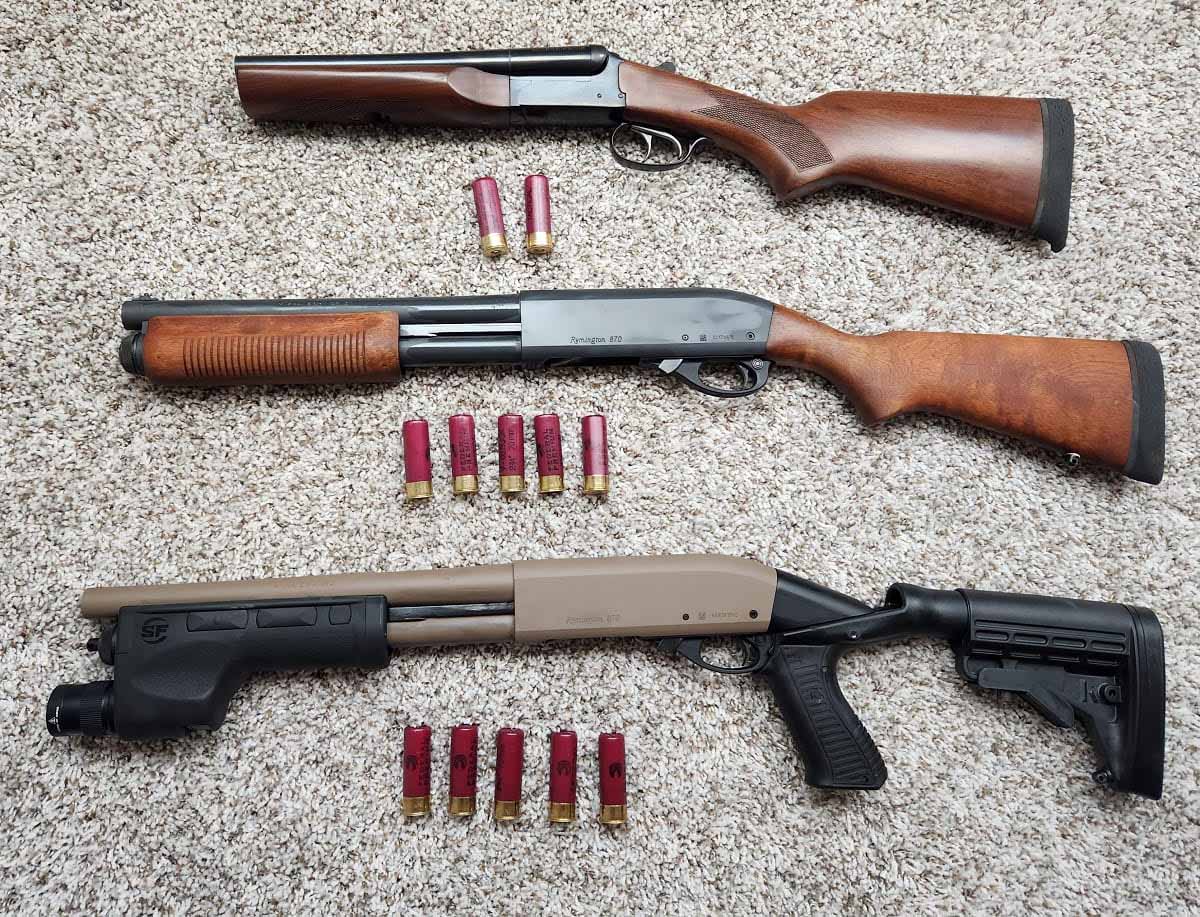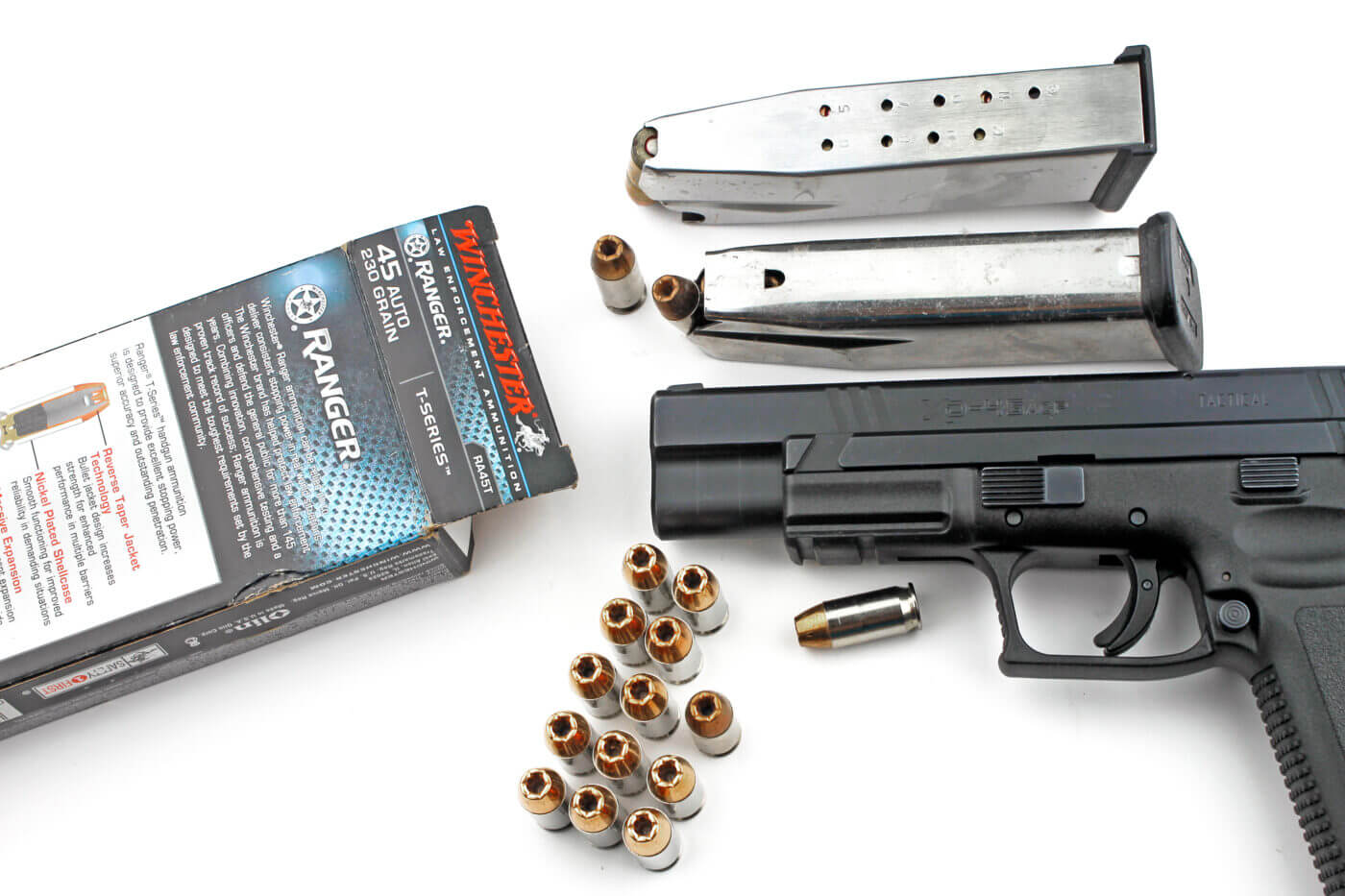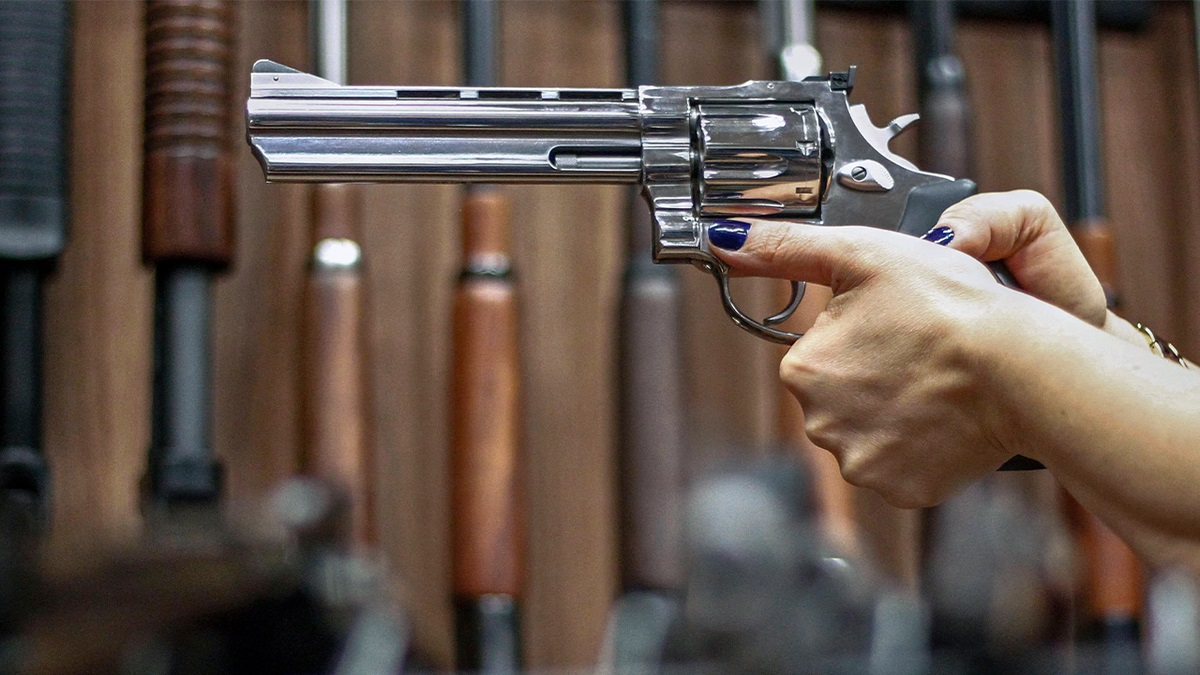Home>Home Security and Surveillance>What Is The Best Scope And Optic For Home Defense
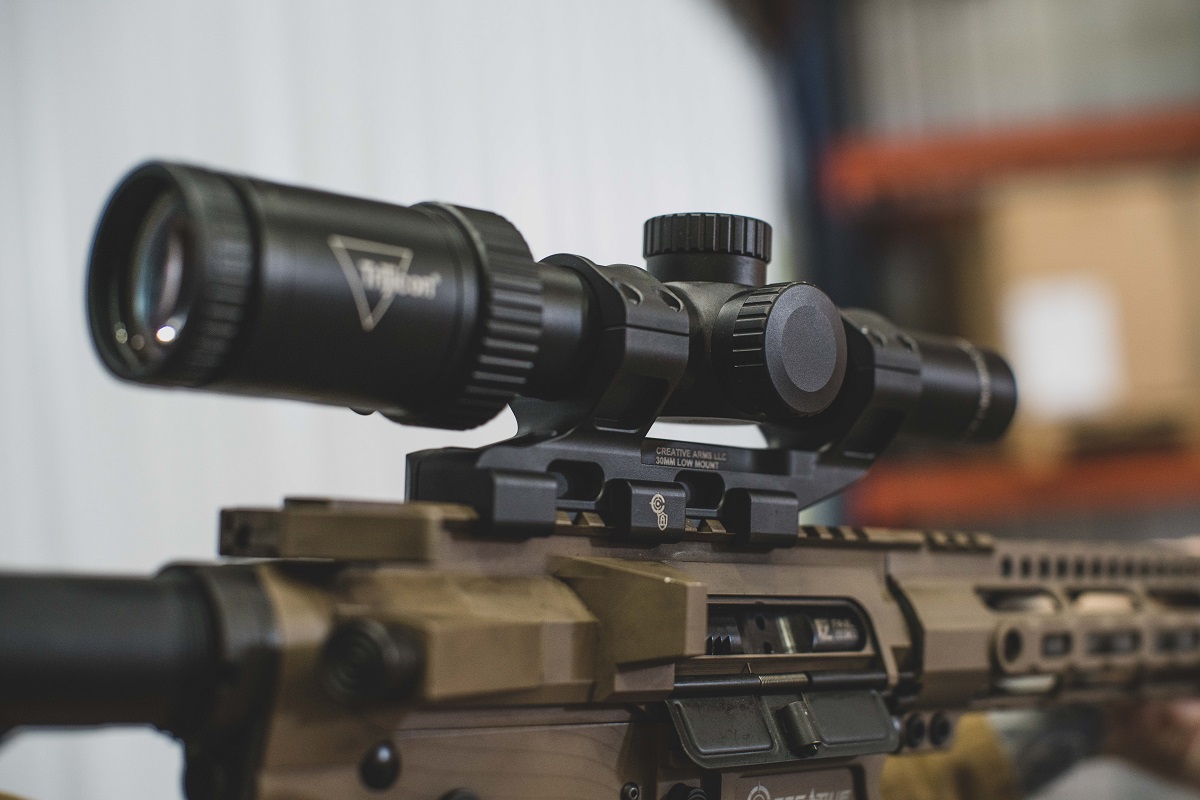

Home Security and Surveillance
What Is The Best Scope And Optic For Home Defense
Modified: March 6, 2024
Looking to enhance your home security and surveillance? Discover the best optic for home defense and safeguard your loved ones with confidence.
(Many of the links in this article redirect to a specific reviewed product. Your purchase of these products through affiliate links helps to generate commission for Storables.com, at no extra cost. Learn more)
Introduction
When it comes to home security and surveillance, having the right equipment is essential. One key component of any home defense strategy is an optic for your firearm. An optic can significantly enhance your accuracy and target acquisition, giving you a clear advantage in a high-stress situation. But with so many options available on the market, how do you choose the best optic for home defense?
In this article, we will explore the various factors to consider when selecting an optic for home defense and delve into the different types of optics available. Whether you are a seasoned gun enthusiast or a first-time firearm owner, this guide will provide you with valuable insights to make an informed decision.
Before diving into the different types of optics, it is important to understand the factors to consider when choosing an optic for home defense. These factors will help you narrow down your options and find the optic that best suits your needs:
- Speed and ease of target acquisition: In a home defense scenario, speed is crucial. You want an optic that allows you to quickly and accurately acquire targets, enabling you to react swiftly to potential threats.
- Field of view: A wide field of view is advantageous for home defense, as it allows you to maintain situational awareness and keep an eye on your surroundings.
- Durability: Your optic should be built to withstand the rigors of home defense, including recoil and potential impacts. Look for optics that are shockproof, waterproof, and fog-proof.
- Reticle type: The reticle of an optic plays a crucial role in target acquisition. There are various types of reticles available, ranging from simple red dots to complex holographic sights. Consider your shooting style and preference when selecting a reticle.
- Battery life: Optics that rely on batteries should have a long battery life to ensure that your optic remains operational when you need it most.
Now that we have covered the important factors to consider, let’s explore the different types of optics that are well-suited for home defense:
Key Takeaways:
- Choose the right optic for home defense by considering factors like speed, durability, and reticle type. Red dot sights and holographic sights offer simplicity and precision, while backup iron sights provide a reliable failsafe.
- Optics like prism scopes and variable power scopes offer versatility and precision for home defense. Consider your intended use and the range of engagement distances to select the best optic.
Read more: What Is The Best Dog For Home Defense
Factors to Consider When Choosing an Optic for Home Defense
When it comes to selecting an optic for home defense, several factors should be taken into consideration. Each factor plays a critical role in determining the effectiveness and suitability of the optic for your specific needs. Here are some key factors to consider:
- 1. Purpose: Determine the specific purpose of your optic. Are you primarily focused on close-quarters engagements or long-range precision shooting? Understanding your intended use will help you select the appropriate optic with the right features.
- 2. Optic Type: There are several types of optics available, including red dot sights, holographic sights, prism scopes, variable power scopes, and backup iron sights. Each type has its advantages and disadvantages, so choose one that aligns with your shooting style and preferences.
- 3. Reticle: The reticle is the aiming point within the optic. It can be a simple dot, a crosshair, or a more complex design. Consider the type of reticle that will enable quick target acquisition and precise aiming in high-stress situations.
- 4. Durability: The durability of the optic is of utmost importance, especially in a home defense scenario where your firearm may be subject to rough handling, recoil, and potential impact. Look for optics that are built with robust materials, are shockproof, waterproof, and fog-proof.
- 5. Field of View: A wide field of view allows you to see a larger area, enhancing situational awareness and enabling you to quickly acquire targets. Consider optics with a generous field of view for effective target engagement.
- 6. Mounting Options: Ensure that the optic is compatible with your firearm and consider the mounting options available. A secure and reliable mounting system is essential to maintain zero and prevent any movement during use.
- 7. Battery Life: If you opt for an optic with battery-powered illumination, check the estimated battery life. Long battery life ensures that your optic remains functional when you need it most, without the fear of running out of power.
- 8. Price: Consider your budget when choosing an optic. While quality optics may come with a higher price tag, it is important to find the right balance between price and performance.
By carefully considering these factors, you can narrow down your options and find an optic that matches your requirements for home defense. Now, let’s explore some of the most popular types of optics available on the market.
Red Dot Sights
Red dot sights are one of the most popular types of optics for home defense. They feature a simple illuminated dot reticle that allows for quick and easy target acquisition. Red dot sights are known for their simplicity, reliability, and effectiveness in close-quarters engagements.
One of the key advantages of red dot sights is their unlimited eye relief, which means you can aim with both eyes open. This provides a wider field of view, allowing you to maintain awareness of your surroundings while still keeping the reticle on target. This feature is particularly beneficial in home defense scenarios where situational awareness is crucial.
Red dot sights are typically parallax-free, meaning the reticle remains on target regardless of eye position or target distance. This eliminates the need to align the eye perfectly with the sight, providing faster target acquisition and more accurate shots.
When selecting a red dot sight for home defense, consider the following factors:
- Dot Size: Red dot sights come in various dot sizes, ranging from 1 MOA to 5 MOA or larger. A smaller dot size offers more precision for longer-range shots, while a larger dot size enables faster target acquisition at close distances.
- Brightness Settings: Look for red dot sights with multiple brightness settings to accommodate different lighting conditions. This ensures that the dot remains visible and clear, whether you’re in a brightly lit room or navigating low-light areas of your home.
- Battery Life: Opt for a red dot sight with extended battery life to ensure continuous operation when needed. Some models even feature motion-activated or auto-shutoff functions to conserve battery power.
- Durability: Home defense situations can be intense and unpredictable, so choose a red dot sight that is rugged and built to withstand recoil, shocks, and impacts. Look for models that are constructed with durable materials and have a proven track record of durability.
- Mounting Options: Ensure that the red dot sight can be securely mounted to your firearm using the appropriate mounting system. A sturdy and reliable mount ensures that the optic maintains zero, even during rapid movements.
Overall, red dot sights provide a fast and intuitive aiming solution for home defense. Their simplicity, reliability, and ease of use make them an excellent choice for both experienced shooters and beginners alike.
Holographic Sights
Holographic sights are another popular choice for home defense due to their unique technology and versatility. These sights use holographic imaging to create a reticle that appears as though it is floating in the middle of the sight window.
One of the main advantages of holographic sights is their ability to provide a clear, precise aiming point regardless of eye position. Unlike traditional scopes or red dot sights, holographic sights do not require you to align your eye perfectly with the sight. This is achieved through the use of a holographic reticle that is projected onto a glass optical window, allowing for unlimited eye relief and fast target acquisition.
Another notable feature of holographic sights is their ability to provide a variety of reticle options. Many models offer multiple reticle patterns and color options, allowing you to choose the one that best suits your shooting style and preferences. This versatility can be especially useful in home defense situations where quick target acquisition and precise shot placement are crucial.
When considering holographic sights for home defense, keep the following factors in mind:
- Reticle Options: Look for holographic sights that offer a variety of reticle patterns and colors. This allows you to customize the sight to match your shooting needs and preferences. Some models even offer the ability to change reticle shapes or switch between single dot and circle-dot configurations.
- Field of View: Consider the size of the sight window and the field of view provided by the holographic sight. A wider field of view allows for better situational awareness and target tracking, which can be crucial in home defense scenarios.
- Battery Life: Holographic sights require power to project the reticle, so it’s important to choose a sight with a long-lasting battery life. Look for models that offer efficient power management features or the ability to use advanced battery options.
- Durability: Opt for holographic sights that are built to withstand the rigors of home defense. Look for models that are constructed with rugged materials, are shockproof, and have water-resistant or waterproof features.
- Mounting Compatibility: Ensure that the holographic sight is compatible with your firearm’s mounting system. Consider the ease of installation and the stability of the mount to ensure the sight remains securely attached during rapid movements.
Holographic sights offer a unique aiming solution for home defense, combining speed, precision, and versatility. Their ability to provide a clear reticle regardless of eye position and the variety of reticle options make them a popular choice among shooters looking for reliable and effective optics for close-quarters engagements.
Consider a red dot sight for home defense. It provides quick target acquisition and is easy to use in low light. Look for a durable and reliable model within your budget.
Prism Scopes
Prism scopes are a versatile and compact option for those seeking a reliable optic for home defense. These scopes utilize a prism and an etched reticle to provide magnification and aim points without the need for batteries or complex optic systems.
One of the main advantages of prism scopes is their compact size. They are designed to be lightweight and portable, making them easy to maneuver within confined spaces. The magnification range of prism scopes is typically lower compared to traditional variable power scopes, typically ranging from 1x to 5x. This makes them ideal for close to mid-range engagements encountered in home defense scenarios.
The reticles in prism scopes are etched onto glass, resulting in a crisp and clear aiming point. They are typically available in a variety of reticle styles, including simple crosshairs, bullet drop compensators (BDC), and even red or green illuminated options for low-light environments. These reticles provide precise aiming and quick target acquisition, crucial features for home defense situations.
When considering prism scopes for home defense, consider the following factors:
- Magnification Range: Determine the appropriate magnification range based on your engagement distances. For close-quarters scenarios, lower magnifications are typically preferred, while mid-range engagement may require slightly higher magnification.
- Reticle Selection: Choose a prism scope that offers a reticle style that suits your shooting needs. Consider reticles with clear and intuitive aim points for quick target acquisition and precise shot placement.
- Eye Relief: Ensure that the prism scope provides adequate eye relief for comfortable and safe shooting. Optics with longer eye relief are especially important when using firearms with heavy recoil.
- Durability: Look for prism scopes that are built to withstand the unique demands of home defense. Check for features like shockproof construction, water resistance, and fog-proof capabilities to ensure reliability in any environment.
- Mounting Options: Verify that the prism scope is compatible with your firearm’s mounting system. Consider the ease of installation and the stability of the mount to maintain zero and prevent movement during use.
Prism scopes offer a reliable and compact solution for home defense. Their lightweight design, clear reticles, and magnification capabilities make them an excellent choice for close to mid-range engagements in low-light or high-stress situations.
Read more: What Handgun Is The Best For Home Defense
Variable Power Scopes
Variable power scopes are a popular choice for those looking for versatility and precision in their home defense optics. These scopes allow you to adjust the magnification level, giving you the flexibility to engage targets at various distances with enhanced accuracy.
One of the main advantages of variable power scopes is their ability to provide a wide range of magnification options. Whether it’s close-quarters engagements or longer-range shots, these scopes can be easily adjusted to meet the specific needs of the situation. This versatility can be especially beneficial in home defense scenarios, where the distance to potential threats may vary.
Variable power scopes typically have a magnification range, such as 1-4x, 2-10x, or even 3-18x. The lower magnifications allow for a wider field of view and quicker target acquisition in close-quarters situations. On the other hand, higher magnifications provide enhanced target identification and engagement capabilities at longer distances.
When considering variable power scopes for home defense, keep the following factors in mind:
- Magnification Range: Choose a scope with a magnification range that suits your intended use. Consider the typical engagement distances in your home defense scenario to determine the optimal magnification range.
- Reticle Compatibility: Ensure that the chosen scope has a reticle that meets your needs. Common options include duplex, mil-dot, or BDC reticles. Select a reticle that provides clear aiming points and quick target acquisition.
- Objective Lens Diameter: Consider the size of the objective lens, as it determines the amount of light that enters the scope. A larger objective lens diameter can provide a brighter and clearer image, especially in low-light conditions.
- Eye Relief: Verify that the scope offers sufficient eye relief for comfortable shooting, especially if you’re using firearms with significant recoil. Ample eye relief prevents potential injuries and allows for a more relaxed shooting experience.
- Durability: Look for scopes that are built to withstand the demands of home defense. Features such as shockproof construction, waterproofing, and fog-proofing are crucial to ensure reliable performance in various conditions.
- Adjustment Turrets: Check that the adjustment turrets on the scope are easy to manipulate and offer precise and repeatable adjustments. This enables you to quickly dial in your shots and make fine-tuned corrections as needed.
Variable power scopes offer versatility and precision for home defense. The ability to adjust magnification levels and the variety of reticle options make them a valuable tool for engaging targets at different distances with accuracy and confidence.
Backup Iron Sights
While optics are a valuable addition to any home defense setup, it’s important to have a reliable backup plan in case of optic failure or battery drain. This is where backup iron sights (BUIS) come into play. BUIS provide a secondary aiming option that does not rely on batteries or complex optic systems, ensuring you have a reliable means of targeting in any situation.
Backup iron sights are typically composed of a rear sight and a front sight, both of which can be folded or deployed as needed. When your primary optic becomes compromised, you can quickly and easily flip up the iron sights to establish a proper sight picture. This redundancy gives you the peace of mind that you’ll always have an effective aiming method at your disposal.
One of the advantages of backup iron sights is their simplicity. They are typically designed with durability in mind, using rugged materials that can withstand the demands of home defense situations. This means they can handle recoil, impacts, and rough handling without compromising their functionality.
When considering backup iron sights for home defense, consider the following factors:
- Compatibility: Ensure that the backup iron sights are compatible with your firearm’s rail system or mounting options. They should be able to securely attach and maintain their zero, even during rapid movements or rough conditions.
- Construction: Look for backup iron sights made from durable materials, such as steel or aluminum, to ensure longevity and reliability. They should be able to withstand the rigors of home defense scenarios without losing their zero.
- Sight Picture: Consider the design and features of the backup iron sights to ensure they provide a clear and intuitive sight picture. Look for sights with adjustable windage and elevation capabilities to fine-tune your aim.
- Deployment: Evaluate how quickly and easily the backup iron sights can be deployed. They should have a smooth and secure folding mechanism to transition smoothly between using your primary optic and the iron sights.
- Height Over Bore: Take into account the height over bore of the backup iron sights. A lower height over bore allows for easier target acquisition and a more natural line of sight when aiming.
Backup iron sights are a crucial addition to any home defense setup, providing a reliable secondary aiming method in case of optic failure. Their simplicity, durability, and ease of use make them an essential component for maintaining effective target engagement capabilities.
Conclusion
Choosing the best optic for home defense is a critical decision that can significantly impact your ability to protect yourself and your loved ones. By considering factors such as speed and ease of target acquisition, field of view, durability, reticle type, battery life, and price, you can narrow down your options and find the optic that best suits your needs.
From the simplicity and speed of red dot sights to the versatility and precision of holographic sights, the compactness and reliability of prism scopes, and the adjustable magnification of variable power scopes, there are various types of optics available to enhance your home defense strategy.
However, it’s important not to solely rely on optics. Having backup iron sights as a failsafe in case of optic failure is essential. These sights offer a reliable and proven aiming solution that doesn’t rely on batteries or complex systems.
Ultimately, choosing the best optic for home defense comes down to personal preference, shooting style, and the specific requirements of your situation. Consider your intended use, the range of engagement distances, and the level of precision and flexibility you desire.
Remember, thorough research, hands-on testing, and seeking expert advice can further assist in making an informed decision. Prioritize durability, ease of use, and reliable performance to ensure that your optic can withstand the challenges of a home defense scenario.
Investing in a high-quality optic that suits your needs and aligns with your shooting style can greatly enhance your ability to effectively engage targets and maintain situational awareness in high-stress situations. Above all, prioritize safety, practice proper firearm handling, and regularly train with your chosen optic to maximize its potential and ensure readiness when it matters most.
By carefully considering your options and selecting the optic that best meets your requirements, you can confidently defend your home and loved ones with enhanced accuracy, speed, and confidence.
Frequently Asked Questions about What Is The Best Scope And Optic For Home Defense
Was this page helpful?
At Storables.com, we guarantee accurate and reliable information. Our content, validated by Expert Board Contributors, is crafted following stringent Editorial Policies. We're committed to providing you with well-researched, expert-backed insights for all your informational needs.
